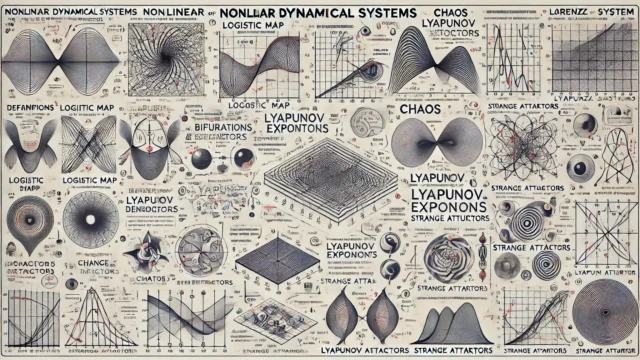Convolution Integral: Detailed Explanation, Proofs, and Derivations
The convolution integral is a mathematical operation that expresses the amount of overlap of one function as it is shifted over another function. It is widely used in signal processing, systems analysis, and probability theory.
Definition of the Convolution Integral
The convolution of two functions \( f(t) \) and \( g(t) \) is defined as:
$$ (f * g)(t) = \int_{-\infty}^{\infty} f(\tau) g(t – \tau) \, d\tau $$
where \( * \) denotes the convolution operation.
Properties of the Convolution Integral
1. **Commutativity**: The convolution operation is commutative, meaning
$$ f * g = g * f $$
This can be shown by changing the variable of integration.
2. **Associativity**: The convolution operation is associative, meaning
$$ f * (g * h) = (f * g) * h $$
This can be shown by a triple integration and changing the order of integration.
3. Distributivity: The convolution operation is distributive over addition, meaning
$$ f * (g + h) = f * g + f * h $$
4. Identity Element: The delta function \( \delta(t) \) is the identity element for convolution, meaning
$$ f * \delta = f $$
Convolution Theorem
The convolution theorem states that the Fourier transform of the convolution of two functions is the pointwise product of their Fourier transforms. Mathematically,
$$ \mathcal{F}\{f * g\} = \mathcal{F}\{f\} \cdot \mathcal{F}\{g\} $$
where \( \mathcal{F} \) denotes the Fourier transform.
Derivations and Proofs
Proof of Commutativity
Starting with the definition of convolution,
$$ (f * g)(t) = \int_{-\infty}^{\infty} f(\tau) g(t – \tau) \, d\tau $$
Let \( u = t – \tau \), hence \( \tau = t – u \) and \( d\tau = -du \). Substituting these into the integral,
$$ (f * g)(t) = \int_{-\infty}^{\infty} f(t – u) g(u) (-du) = \int_{-\infty}^{\infty} g(u) f(t – u) \, du $$
Thus,
$$ (f * g)(t) = (g * f)(t) $$
Proof of the Convolution Theorem
Consider the Fourier transform of the convolution of \( f(t) \) and \( g(t) \),
$$ \mathcal{F}\{(f * g)(t)\} = \int_{-\infty}^{\infty} \left( \int_{-\infty}^{\infty} f(\tau) g(t – \tau) \, d\tau \right) e^{-i\omega t} \, dt $$
Interchanging the order of integration,
$$ \mathcal{F}\{(f * g)(t)\} = \int_{-\infty}^{\infty} f(\tau) \left( \int_{-\infty}^{\infty} g(t – \tau) e^{-i\omega t} \, dt \right) d\tau $$
Let \( u = t – \tau \), hence \( t = u + \tau \) and \( dt = du \). Substituting these into the inner integral,
$$ \mathcal{F}\{(f * g)(t)\} = \int_{-\infty}^{\infty} f(\tau) \left( \int_{-\infty}^{\infty} g(u) e^{-i\omega (u + \tau)} \, du \right) d\tau $$
$$ = \int_{-\infty}^{\infty} f(\tau) e^{-i\omega \tau} \left( \int_{-\infty}^{\infty} g(u) e^{-i\omega u} \, du \right) d\tau $$
Recognizing the inner integral as the Fourier transform of \( g(t) \),
$$ \mathcal{F}\{(f * g)(t)\} = \int_{-\infty}^{\infty} f(\tau) e^{-i\omega \tau} \mathcal{F}\{g(t)\} d\tau $$
Recognizing the remaining integral as the Fourier transform of \( f(t) \),
$$ \mathcal{F}\{(f * g)(t)\} = \mathcal{F}\{f(t)\} \cdot \mathcal{F}\{g(t)\} $$
This completes the proof of the convolution theorem.
\subsubsection*{Associativity of Convolution}
To show that convolution is associative, consider three functions \( f(t) \), \( g(t) \), and \( h(t) \). We need to show that:
$$ f * (g * h) = (f * g) * h $$
Starting with the left-hand side:
$$ f * (g * h) = \int_{-\infty}^{\infty} f(\tau) (g * h)(t – \tau) \, d\tau $$
Substitute the definition of convolution for \( g * h \):
$$ f * (g * h) = \int_{-\infty}^{\infty} f(\tau) \left( \int_{-\infty}^{\infty} g(\xi) h(t – \tau – \xi) \, d\xi \right) d\tau $$
Interchange the order of integration:
$$ f * (g * h) = \int_{-\infty}^{\infty} \left( \int_{-\infty}^{\infty} f(\tau) g(\xi) \, d\tau \right) h(t – \tau – \xi) \, d\xi $$
Recognize the inner integral as the convolution of \( f \) and \( g \):
$$ f * (g * h) = \int_{-\infty}^{\infty} (f * g)(\eta) h(t – \eta) \, d\eta $$
where \( \eta = \tau + \xi \). This is the definition of \( (f * g) * h \), thus showing that:
$$ f * (g * h) = (f * g) * h $$
This completes the proof of associativity for convolution.





